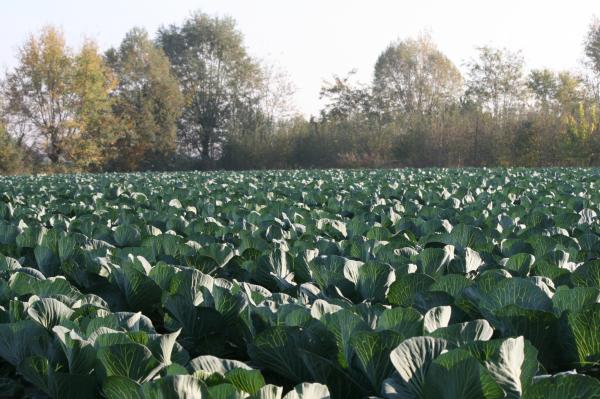Ecotypes
A project to enhance certain types of local plants, through the recovery and selection of some varieties of vegetable species that are no longer in production today.

Objectives
- The project aims to enhance some types of plants, especially local ones, through the recovery and selection of some varieties of vegetable species, “ecotypes” (varieties once selected by farmers), which have been undermined by production, the logic of approval and the homogeneity of the productions.
- The project also intends, through the conservation and replication of the genetic material of these plants, to make farmers the owners of the seeds they cultivate, to make these seeds available to everyone, and, by adapting the cultivated varieties to the place and the environment, to improve their organoleptic properties and production quality, to rediscover particular flavors related to the territory and cultivation.
All this is done by identifying mother plants to let go to seed to harvest and sow it in the future.
The stages of the project
The first vegetables identified were Paduan broccoli (of three different types) and Castelfranco radicchio (four varieties).
The initial stage of the project was a visit to the C.R.A., Council for Research and Experimentation in Agriculture, in Monsanpolo del Tronto (AP) where Dr. Nazzareno Acciarri, the center's geneticist, taught us to observe the particular characteristics of the plants to be selected to produce seed. In fact, the identification of mother plants is not easy, finding the right parameters of beauty, shape and flavor, and last but not least productivity, health and resistance to cold and diseases is possible only through continuous comparison between producers, consumer feedback and the precious help of the geneticist.
In the second stage, we added new varieties to the project: Tuscan cauliflower, two types of green cauliflower from Macerata, Jesino and Romanesco cauliflower, two from Veronese broccoli (Early and Late), one from Fiolaro di Creazzo broccoli, two from Bassano broccoli (medium and late) and Mont Blanc fennel.
The members involved
Finally, the members participating in the project were chosen: in fact, it was decided to cultivate the plants in the open countryside, in a foothill environment, and in the Lower Padua area.
The farmers involved are Michele Borgato, Sara Tognato (Caresà), Elia and Severino Bozzolan (Podere Clara), Elisa Nicolè (Off the field), Franco Zecchinato (Il Biancospino), Giuseppe Boregato and Andrea Giubilato.
Important in this choice are the diversity of cultivation areas, work experiences and the possibility for some of them to have direct contact with the consumer (and thus immediate feedback).
The selection
The type of selection is mass: from a population of plants, some are chosen that are similar to each other and meet the criteria identified based on the needs of cultivation, sale and culinary use (color, leaf, volume, weight, size, homogeneity, health - tolerance to pathologies: bacteria, fungi and other parasites). Obviously taste and texture are selected later, also based on the type of consumption (cooked, raw or other).
The choice of these plants must also be made by including plants that are similar to each other but not perfectly the same. This serves to reinforce the species and not push the selection towards a single character that over time impoverishes the plant. Some uniformity is lost, but the plant is strengthened and the seed is strengthened (better germinability and hardiness).
These plants must be removed with their root ball from the field, placed in pots in a place protected from rain, such as a small greenhouse, for a period of time sufficient to overcome winter.
The field left vacant in the meantime is being worked so that it can accommodate other plants again. In spring, the plants will be put back on the ground and isolated with a net or tunnel (to avoid pollination with other varieties) and protected until after fruit set (end of flowering).
These plants will go to seed. The seed will be planted to obtain new plants and continue the selection work. To have good homogeneity, you have to wait at least 4 cycles.
Next steps
Next steps on this journey will be a tasting test with the producers, collaborators and employees of the cooperative, the “sellers” in direct contact with the consumer public, and themed dinners with a presentation/explanation of the project.
Youtube Video has been blocked due to your privacy settings
If you turn on YouTube Video, your privacy preferences will be updated. If you have not agreed to activate third-party cookies for analysis and marketing purposes, this choice will be changed when you approve to unblock the use of Youtube Video
You can always go back and change your settings on the cookie conditions. On the same page you will find information about the person responsible for managing your data, the processing of personal data and the purposes of such processing.
Accept privacy and unlock Youtube Video


